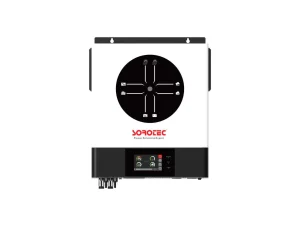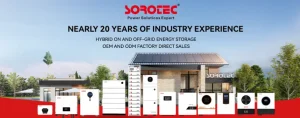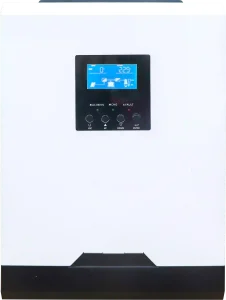Hybrid PV systems are a smart step forward in solar energy. They mix the dependability of grid-tied setups with the freedom of off-grid solutions. By adding energy storage, clever load control, and two-way grid connection, these systems boost efficiency, cut costs, and make power more reliable. SOROTEC, a trusted name in energy solutions, offers these systems for homes and businesses. This guide answers key questions about how they work, their benefits, and why they’re better than regular solar setups.
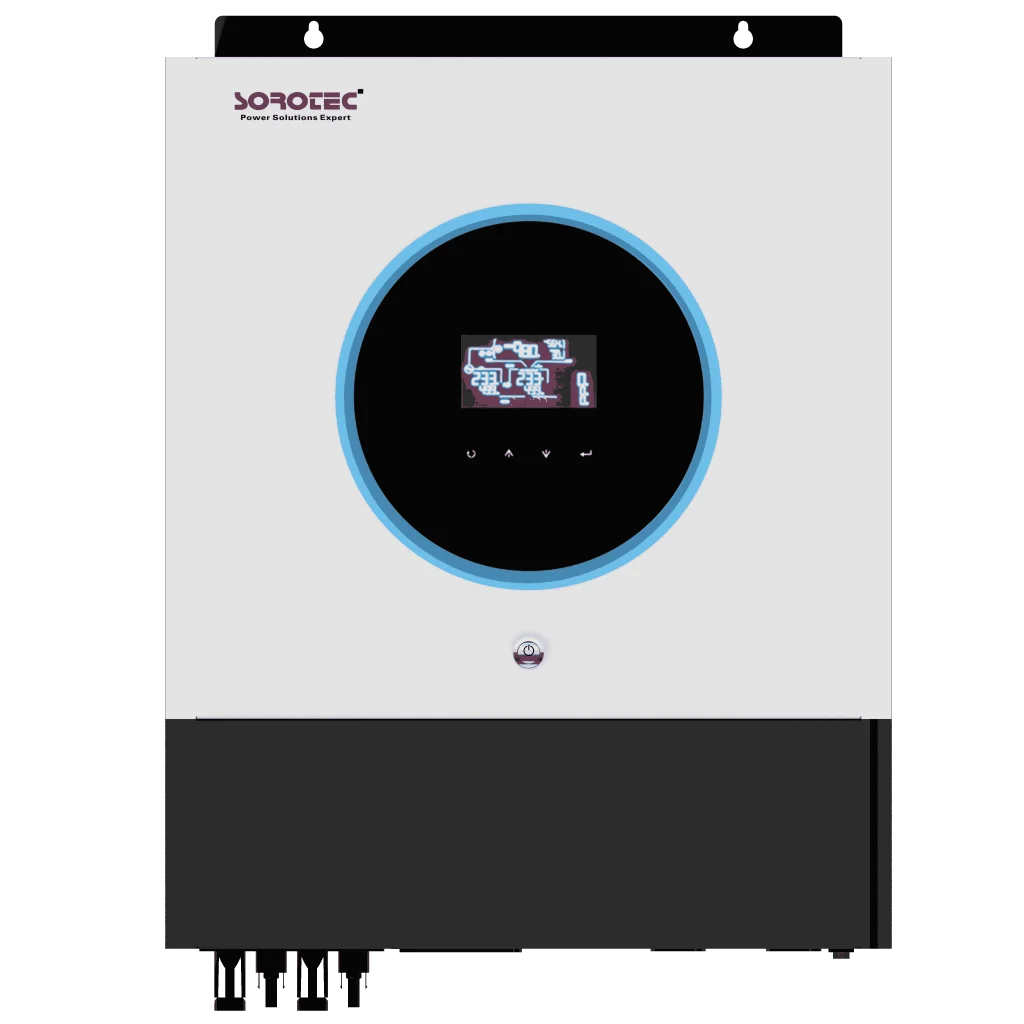
What Makes a Hybrid PV System Different from Conventional Solar Setups?
A hybrid PV system blends solar power with battery storage and grid connection. It gives you the best of both worlds. Unlike regular systems that either work off-grid or send all extra power to the grid, hybrids let you save energy in batteries for later. You can also send power to the utility grid when it saves you money. This makes them flexible. SOROTEC’s hybrid systems are built to handle both on-grid and off-grid needs with ease.
Which Components Are Essential in a Hybrid PV System to Ensure Seamless Operation?
A hybrid PV system needs a few key parts to work smoothly. These include solar panels, a battery bank, a hybrid inverter, and often a smart energy manager. The inverter is the heart of the system. It turns DC power from panels and batteries into AC power for your home or business. It also controls power flow between sources. SOROTEC’s REVO VM II PRO series works for both off-grid and on-grid (optional) setups. These systems also use MPPT controllers to get the most from solar panels. Plus, they have ports like RS485 or CAN for Battery Management System (BMS) integration. This keeps everything running well.
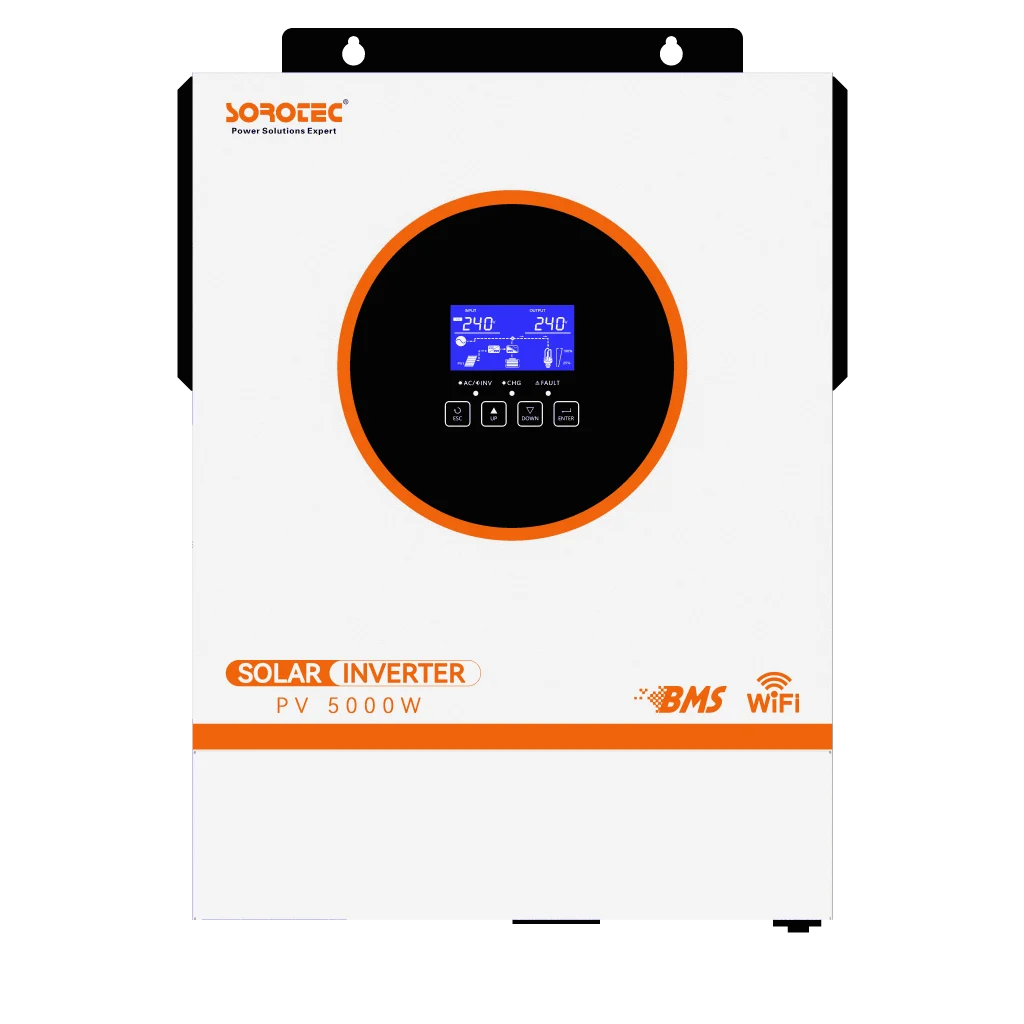
How Does a Hybrid PV System Interact with the Utility Grid?
Hybrid systems are built for two-way grid connection. When your solar panels make extra power, you can store it or send it to the grid. If you need more power—like at night or on cloudy days—the system pulls from batteries or the grid. This back-and-forth makes power steady and efficient. REVO HM Series is made for hybrid on-grid and off-grid use. It gives you options for all kinds of energy needs.
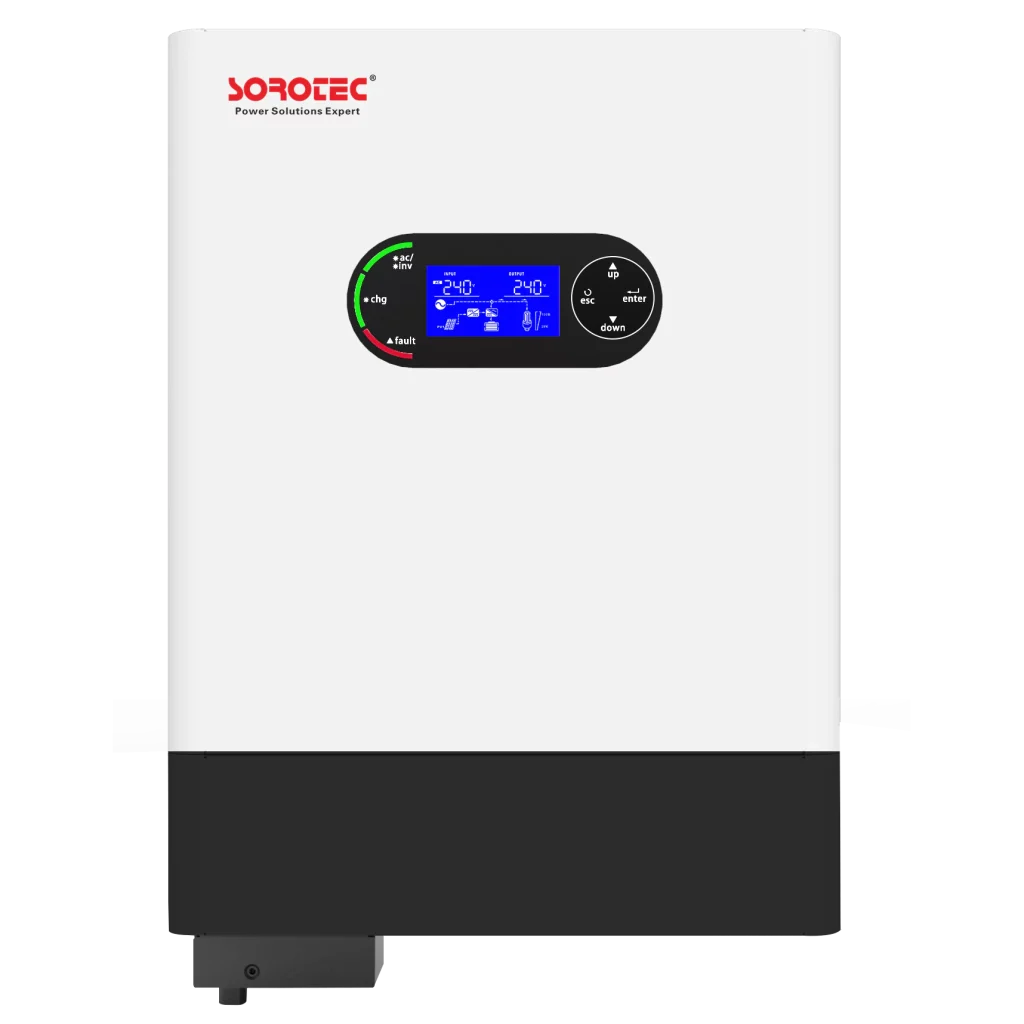
What Advantages Do Hybrid Systems Offer Compared to Traditional PV Installations?
Hybrid systems bring lots of perks. You get energy freedom with battery storage. You rely less on shaky grids. They help cut peak power use, which saves money. Plus, they provide backup power during outages. They also offer smart load control and real-time tracking, which regular solar setups don’t have.
Can Hybrid PV Systems Help Stabilize the Electrical Grid?
Hybrid PV systems make the grid stronger. They handle solar power’s ups and downs. They also help keep voltage and frequency steady, which is key for a reliable grid.
How Do These Systems Manage Renewable Power Variability More Effectively?
Solar power changes with the weather. Hybrid systems fix this by saving extra energy in batteries when the sun shines. They release it when solar power drops. With batteries connected to loads, systems like SOROTEC’s manage charging and discharging. This keeps power smooth and steady.
In What Ways Do They Support Voltage Control and Frequency Regulation?
Hybrid inverters adjust power flow quickly. They add or take in reactive power to keep voltage levels right. They also respond fast to help with frequency control. This makes the grid more stable.
How Do Specific Technologies Contribute to Grid Stability Enhancements?
SOROTEC’s REVO HM Series has strong safety features. These include AC overcurrent, AC overvoltage, and over-temperature protection. These keep the grid safe and stable. The system’s dual-output smart load control prioritizes power use based on real-time needs. This makes the grid work better.
How Is Load Managed Intelligently Using Hybrid PV Systems?
Hybrid systems are great at managing power smartly. They use time-of-use pricing, demand patterns, and battery levels to decide how to use energy. This saves money and makes the system work better.
What Role Does Peak Shaving Play in Reducing Energy Costs?
Peak shaving means using stored energy when grid power costs more. This happens during high-demand times. It cuts your bill and eases grid stress.
How Can Demand Response Be Integrated into These Systems?
Demand response programs reward you for using less power during peak times. Hybrid systems can shift non-urgent loads to cheaper hours. They do this using smart controllers or mobile apps. This saves money and helps the grid.
Are There Solutions That Optimize Load Control Automatically?
SOROTEC’s inverters have two outputs for smart load control. The second output can turn on or off based on battery levels or grid needs. This gives you easy, automatic control over your power use.
Why Is Energy Storage Central to Hybrid Architecture?
Storage is the key to a hybrid system’s power. Without it, you lose flexibility and reliability. Batteries make hybrid systems stand out from regular solar setups.
What Functions Does Battery Storage Fulfill Within Hybrid Designs?
Batteries do many jobs. They save solar power for later, like at night. They provide backup during outages. They can join energy markets for extra services. They also let you work off-grid when needed.
How Does Storage Improve Reliability During Grid Outages?
During blackouts, batteries act like a backup power source. They keep critical devices running without a hitch. This is vital for places like telecom stations. SOROTEC’s REVO HESS Solar Power System for Telecom Station is built for this kind of reliability.
What Technologies Enhance Battery Performance in Modern Systems?
SOROTEC’s battery equalization function extends battery life. It balances charging across cells. Ports like RS485 or CAN for BMS keep batteries in top shape. These features save money by making batteries last longer.
How Do Smart Inverters Improve Operational Efficiency of Hybrid PV Systems?
Smart inverters are the brain of hybrid systems. They use data from sensors, weather forecasts, and user settings to make choices. This keeps the system running at its best.
Why Is Real-Time Monitoring Crucial for Performance Optimization?
With cloud platforms and Wi-Fi or Bluetooth, you can check your system from anywhere. This helps spot problems fast. You can compare performance over time and plan maintenance.
How Do Smart Inverters Enhance Energy Utilization Efficiency?
Smart inverters choose the best power source—solar, battery, or grid. They follow rules you set, like saving money or cutting carbon. This reduces energy waste. SOROTEC’s inverters are built for this kind of smart control.
Which Features Enable Intelligent Control Capabilities in Top-Tier Inverter Solutions?
REVO HM Series has an anti-dust kit for protection. It also offers flexible scheduling. You can set load priorities based on time of day. These features make the system super smart and easy to use.
Can Hybrid PV Systems Be Integrated into Microgrids Successfully?
Hybrid systems are perfect for microgrids. They’re flexible, smart, and can work on their own. This makes them great for small, local power networks.
What Enables Islanded Operation During Grid Failures or Maintenance Windows?
REVO HESS Hybrid ALL-IN-ONE On-Grid and Off-Grid systems have EPS modes. These let the system disconnect from the grid and keep powering local loads. This is key for handling outages or maintenance.
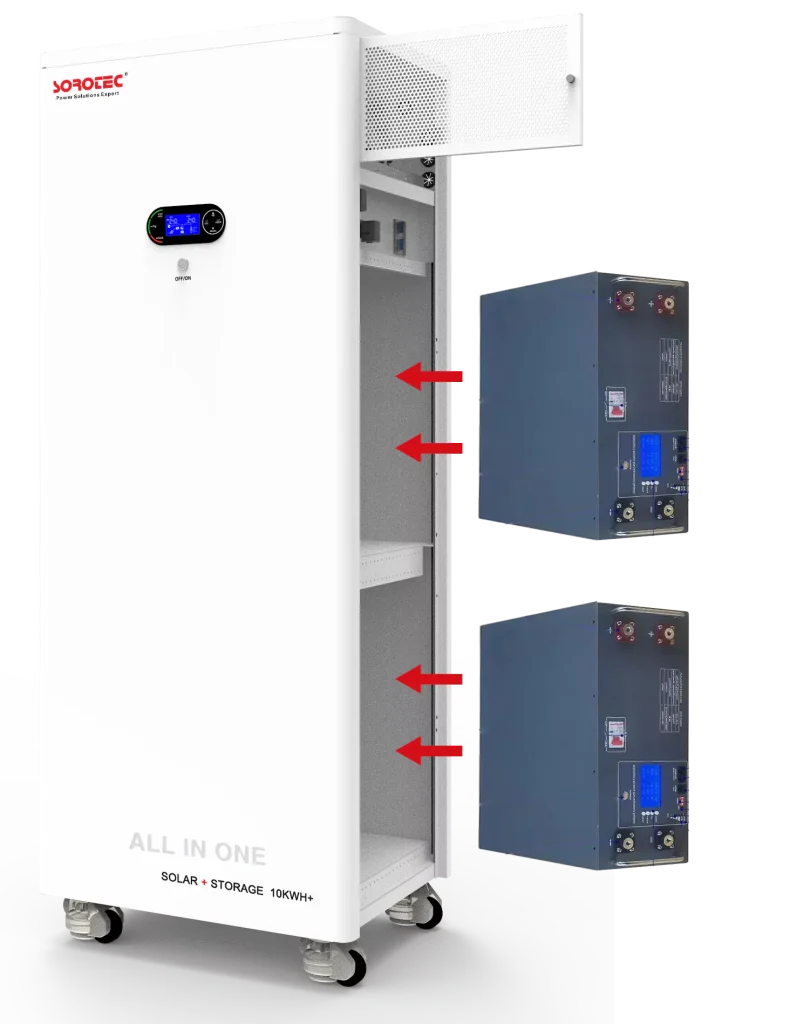
How Can Community-Level Energy Autonomy Be Achieved Using These Systems?
By linking multiple hybrid units in a microgrid, you create a shared power system. A central energy manager coordinates them. This lets homes or businesses share storage and trade power. It reduces reliance on big utilities.
Are There Products Specifically Designed With Microgrid Compatibility in Mind?
SOROTEC’s On & Off Grid REVO HM 4/6KW is made for microgrids. It supports parallel operation up to six units. It also has real-time communication for decentralized setups. This makes it a top choice for microgrids.
Why Is Investing in Hybrid PV Technology Economically Sensible Long-Term?
Hybrid PV systems save money over time. They also help the environment.
How Does Efficient Load Sharing Reduce Fossil Fuel Dependence Over Time?
By using local solar power and storage, you need less diesel or other fuels. This cuts your carbon footprint. It also protects you from rising fuel costs. Off Grid REVO VP/VM Series 1.2/2.2/3.2/5KW is great for remote areas where fuel is hard to get.
In What Ways Do Intelligent Systems Lower Operating Costs Year Over Year?
Smart scheduling avoids costly peak tariffs. Alerts catch problems early to avoid downtime. Optimized battery use extends their life. SOROTEC’s configurable AC/PV output usage time and prioritization boosts these savings. It aligns your system with money-saving signals.
Are There Broader Sustainability Goals That Align With These Investments?
Yes! Hybrid systems support big goals like affordable clean energy, climate action, and sustainable cities. They meet UN Sustainable Development Goals (SDGs) like SDG 7, SDG 13, and SDG 11. Plus, they deliver real benefits today. SOROTEC’s systems make these goals reachable.
FAQ
Q1. What distinguishes a hybrid PV system from a conventional grid-tied solar system?
A: A hybrid system uses battery storage and smart inverters to save extra solar power. Regular grid-tied systems send all surplus to the utility. Hybrids provide backup during outages and cut costs with peak shaving.
Q2. How does a hybrid PV system maintain power during grid outages?
A: With battery storage and EPS mode, hybrids disconnect from the grid and keep powering key loads. This ensures steady electricity. REVO HESS systems are built for this reliability.
Q3. Can hybrid PV systems reduce electricity bills more effectively than standard solar panels?
A: Yes. Hybrids store cheap solar power for peak times. They also manage loads smartly. This cuts reliance on costly grid power. SOROTEC’s systems save more money than regular solar setups.


